Pablo de Sarasate - Zigeunerweisen
Pablo de Sarasate - Zigeunerweisen
Zigeunerweisen (from the German "Gypsy Airs") is a 1980 independent Japanese film directed by Seijun Suzuki and based on Hyakken Uchida's novel, Disk of Sarasate. It takes its title from a gramophone recording of Pablo de Sarasate's violin composition, Zigeunerweisen, which features prominently in the story.
Pablo de Sarasate - Zigeunerweisen
Born Pablo Martín Melitón de Sarasate y Navascuéz in Pamplona, in the Spanish province of Navarre, on 10 March 1844, Pablo began studying violin at the age of five with his father, an artillery bandmaster. Later he took lessons from a local teacher. He gave his first concert at La Caruña when he was only eight years old.
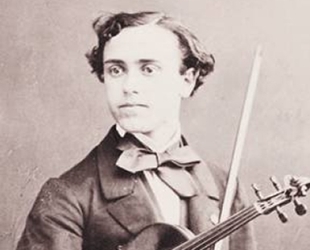
Pablo de Sarasate
Having been received with enthusiasm by his early audiences, Pablo was provided funding by a wealthy patron so that his parents could take him to Madrid to study with Manuel Rodríguez Saez. It was not long after his arrival that the young violinist became a favorite performer at the court of Queen Isabel II.
Spain at the time had vibrant regional traditions but was something of a backwater in terms of the main developments in European classical music. Spanish court soon found that their pupil had exceeded anything they could teach him. They urged Sarasate's family to send him to Paris for further study.
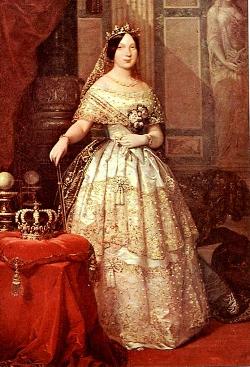
Queen Isabella II
Under the tutelage of a Mr. Alard, violin professor at the Conservatory, Sarasate continued to make rapid progress. Spaniards applauded his renown, and a grant from the Spanish Queen Isabella aided his studies. In 1857 he won the Conservatory's first prize in violin - an honor that placed him already in the top ranks of Spanish violinists. He was virtually guaranteed a career as a performer.
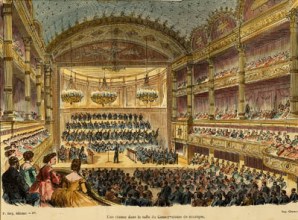
Conservatoire, Paris
Sarasate made his Paris debut as a concert violinist in 1860, and played in London the following year. Over the course of his career, he toured many parts of the world, performing in Europe, North America, and South America.
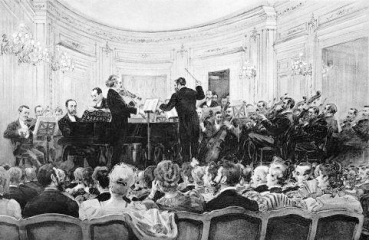
Sarasate - Concert in Paris
The popularity of Sarasate's Spanish flavor in his compositions is reflected in the work of his contemporaries. A number of works for violin were dedicated to Sarasate, including Henryk Wieniawski's Violin Concerto No. 2, Édouard Lalo's Symphonie Espagnole, Camille Saint-Saëns' Violin Concerto No. 3 and his Introduction and Rondo capriccioso, Max Bruch's Scottish Fantasy, and Alexander Mackenzie's Pibroch Suite. Also inspired by Sarasate is William H. Potstock's Souvenir de Sarasate.
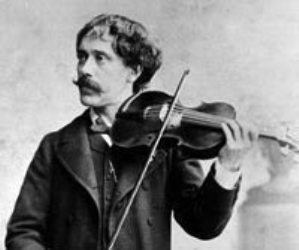
Pablo de Sarasate
George Bernard Shaw once said that though there were many composers of music for the violin, there were but few composers of violin music. But of Sarasate's talents, both as performer and composer, he said that he "left criticism gasping miles behind him." Indeed, Sarasate's four volumes of Spanish dances for violin and piano have been favorites for generations, and his Zigeunerweisen for violin and orchestra is even today a concert standard.
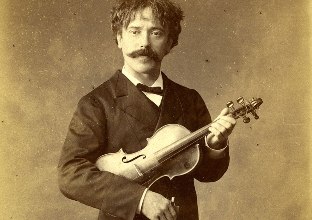
Pablo de Sarasate
Zigeunerweisen (Gypsy Airs), Op. 20 is in one movement but can be divided into four sections, the first three in the key of C minor and the last in A minor, based on the tempi:
Moderato: an imposing, virtuosic introduction with slow majestic energy by the orchestra, then a little softer by the violin itself.
Lento: the violin plays in lugubrious lento 4/4. This section has an improvisational quality; the melody, which essentially consists of pairs of 4-bar phrases, is punctuated with difficult runs and other technically demanding figures, including flying spiccato and ricochet bowings.
Un poco più lento 2/4 – The muted soloist plays a melancholic melody with the so-called reverse-applied dotted note: 1/16 + dotted 1/8 rhythm.
Allegro molto vivace 2/4 – At this point, the piece becomes extremely rapid. The challenging solo part consists mainly of long spiccato runs, along with double stops, artificial harmonics and left-hand pizzicato.
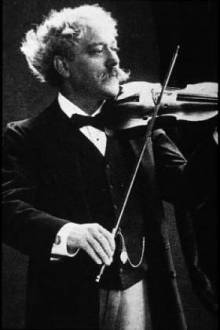
Pablo de Sarasate
The work has remained a staple on records at least since Sarasate himself recorded it in 1904. It has also been recorded by Mischa Elman, Nigel Kennedy, Zino Francescatti, Jascha Heifetz, Ivry Gitlis, Isaac Stern, Itzhak Perlman, Kyung-wha Chung, Gil Shaham, Midori Gotō, Sarah Chang, Anne-Sophie Mutter, and David Garrett. String bassist Edgar Meyer recorded a version with Béla Fleck and Mike Marshall on the album Uncommon Ritual.
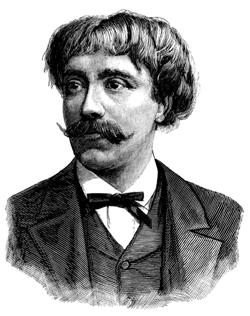
Pablo de Sarasate
Last Updated (Sunday, 15 March 2015 18:04)








